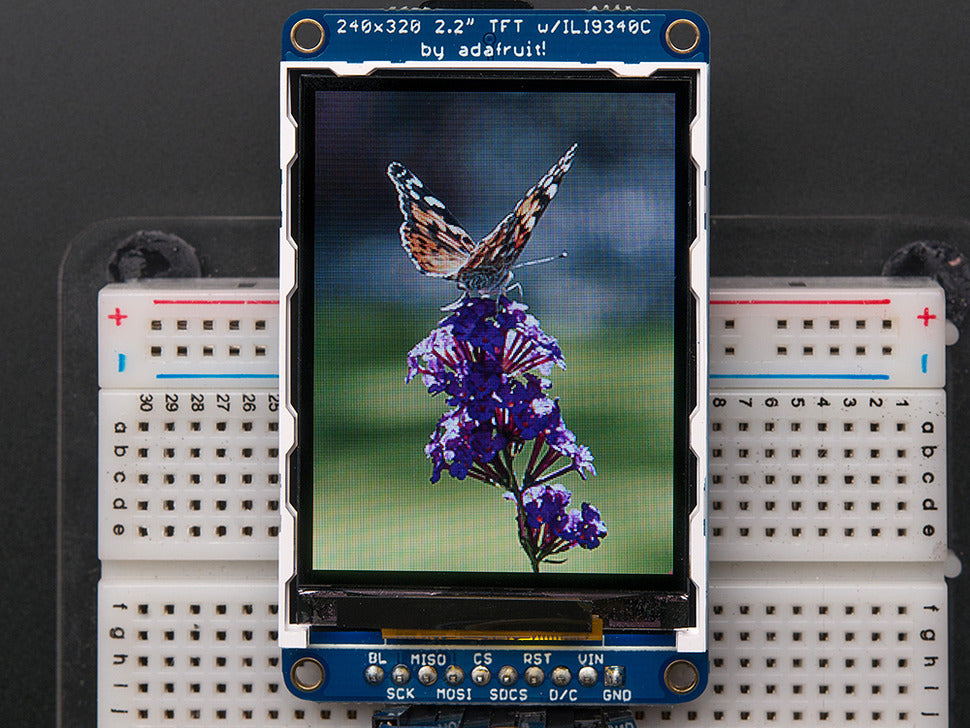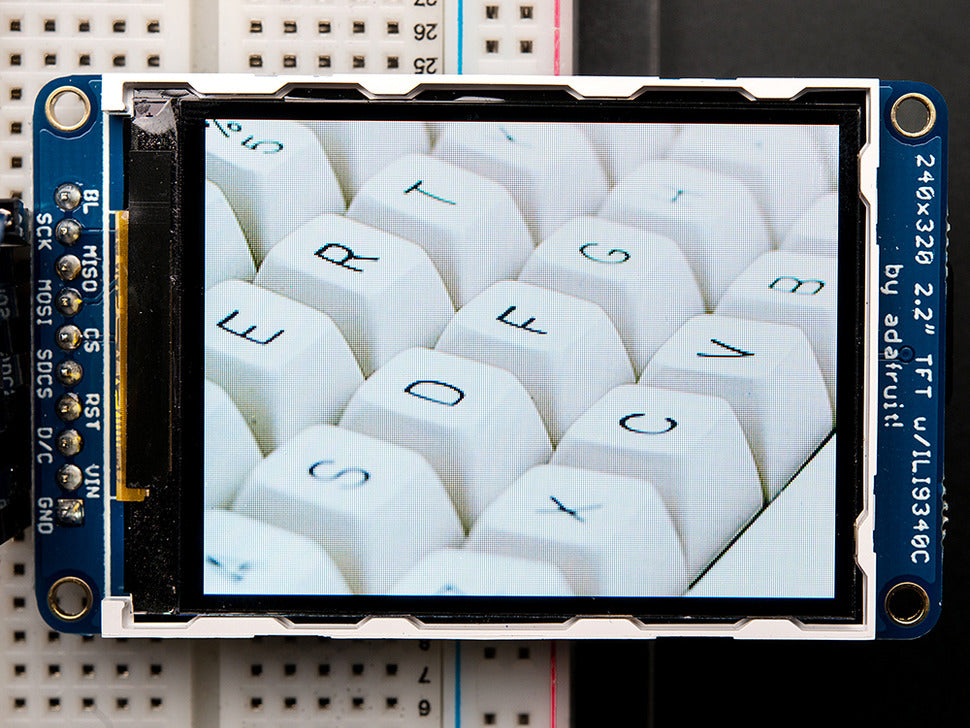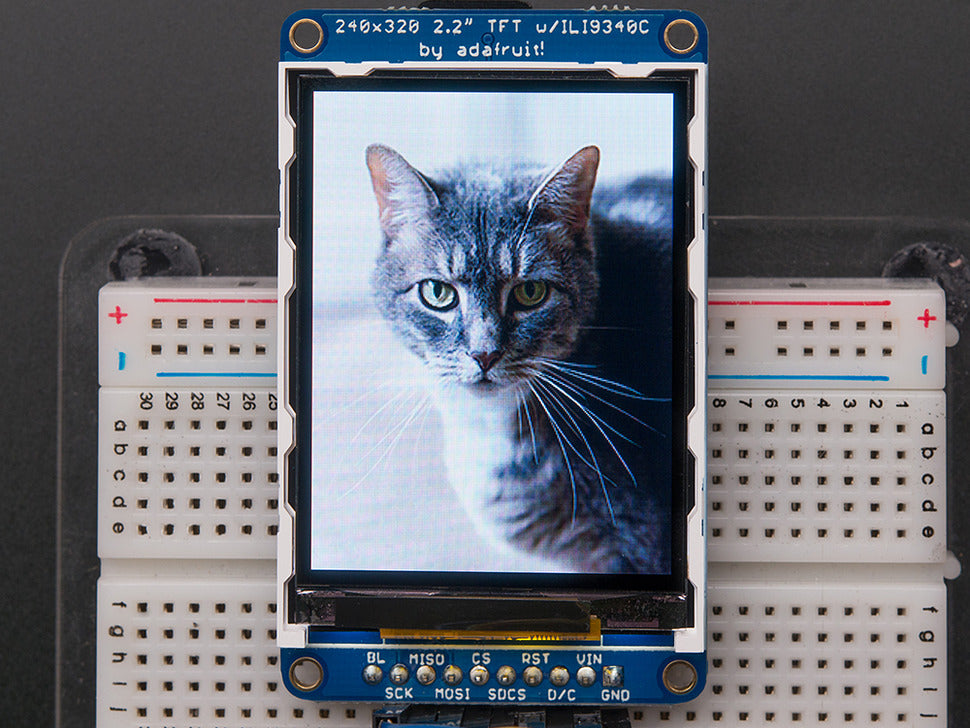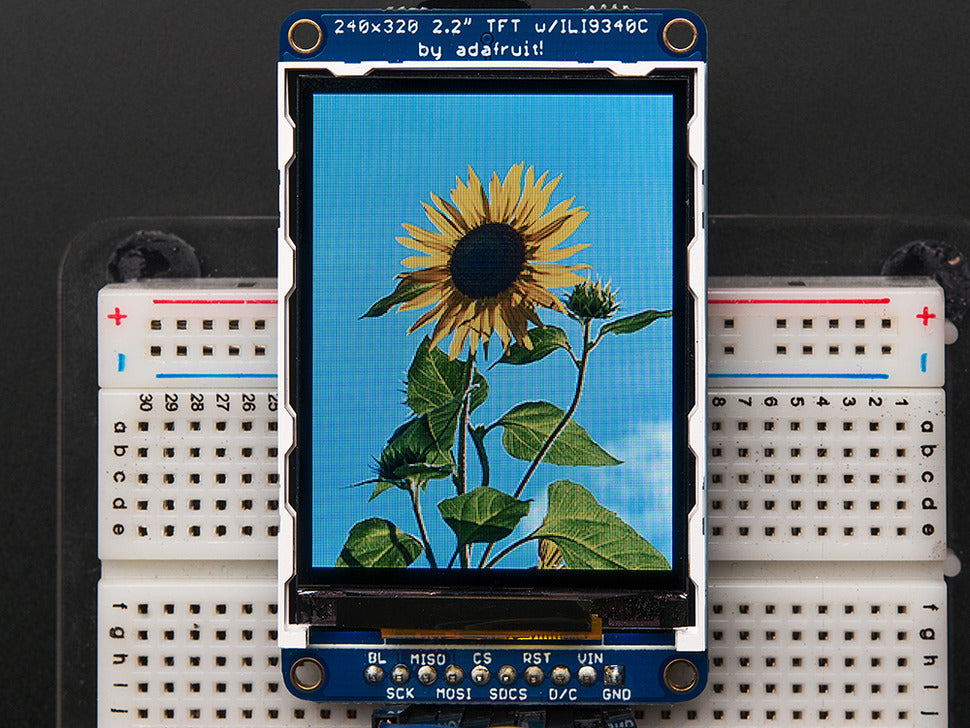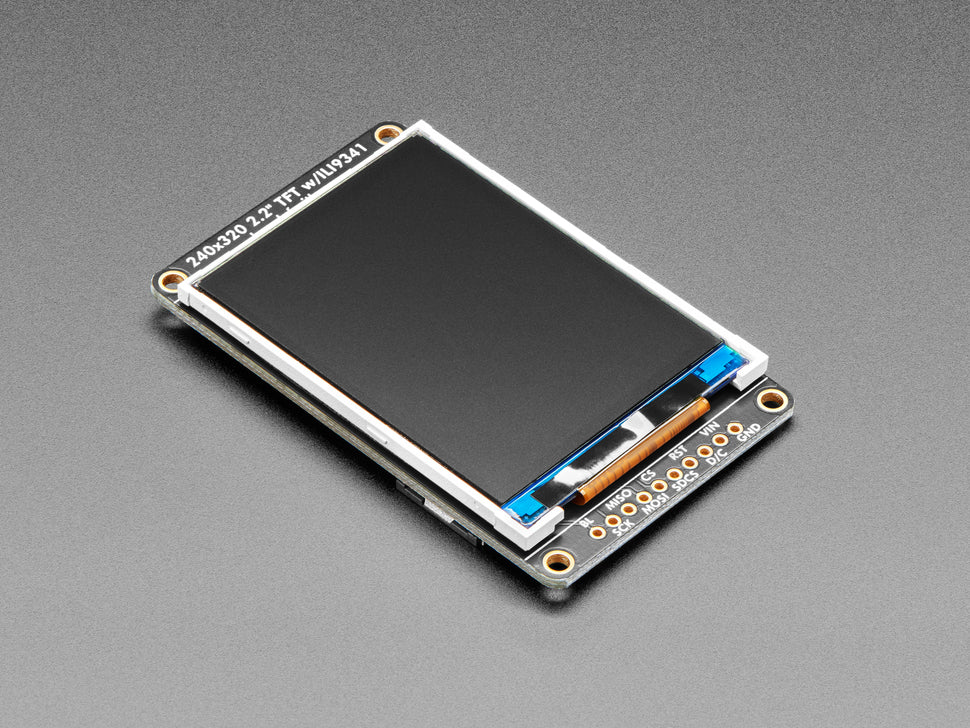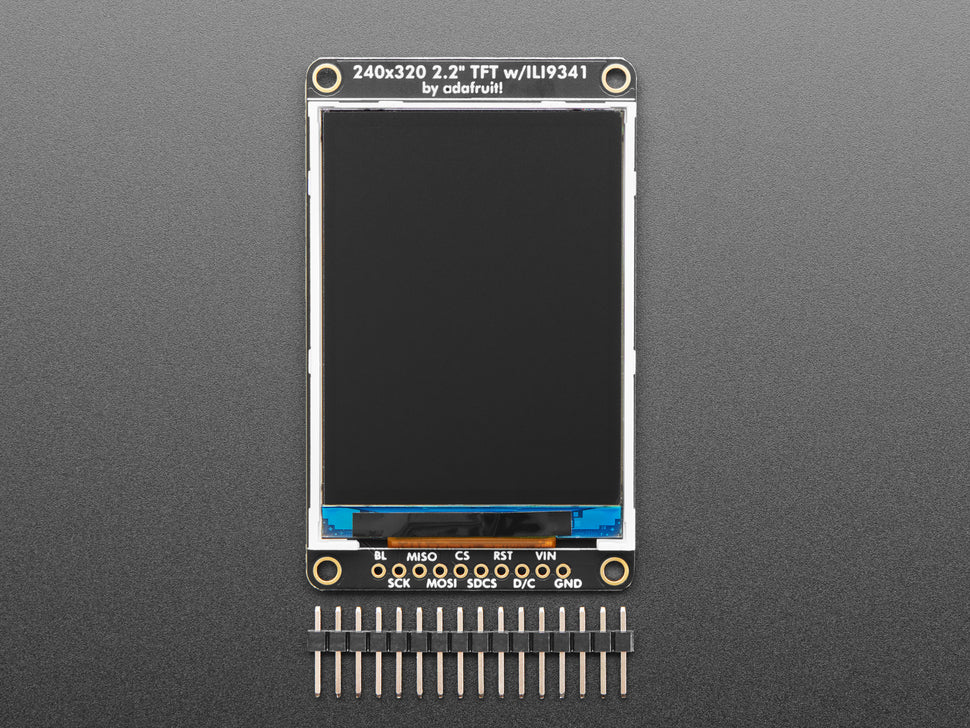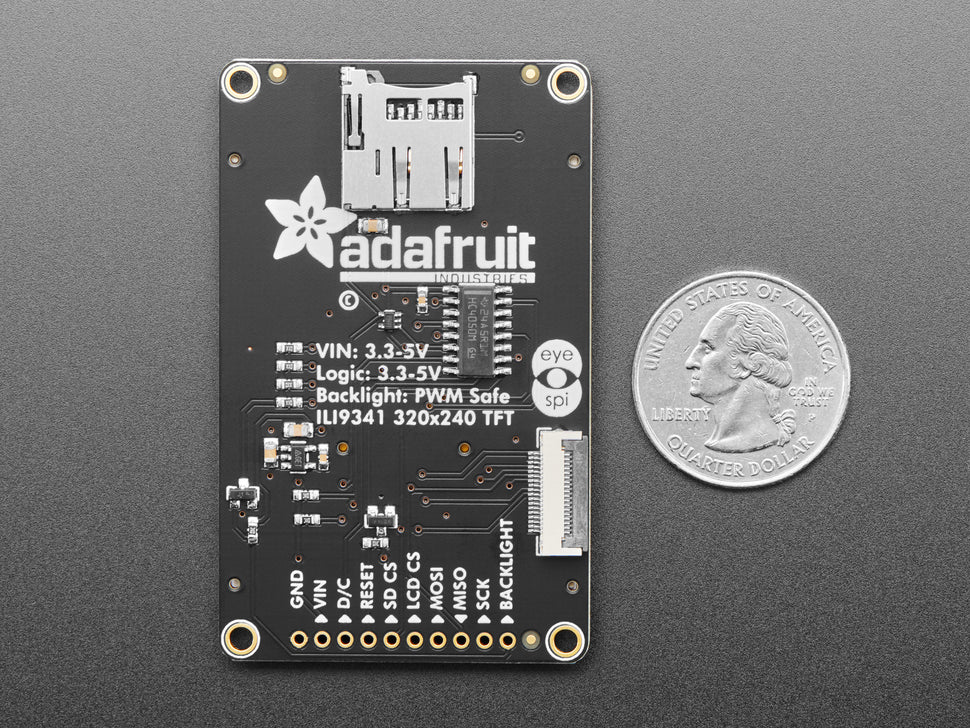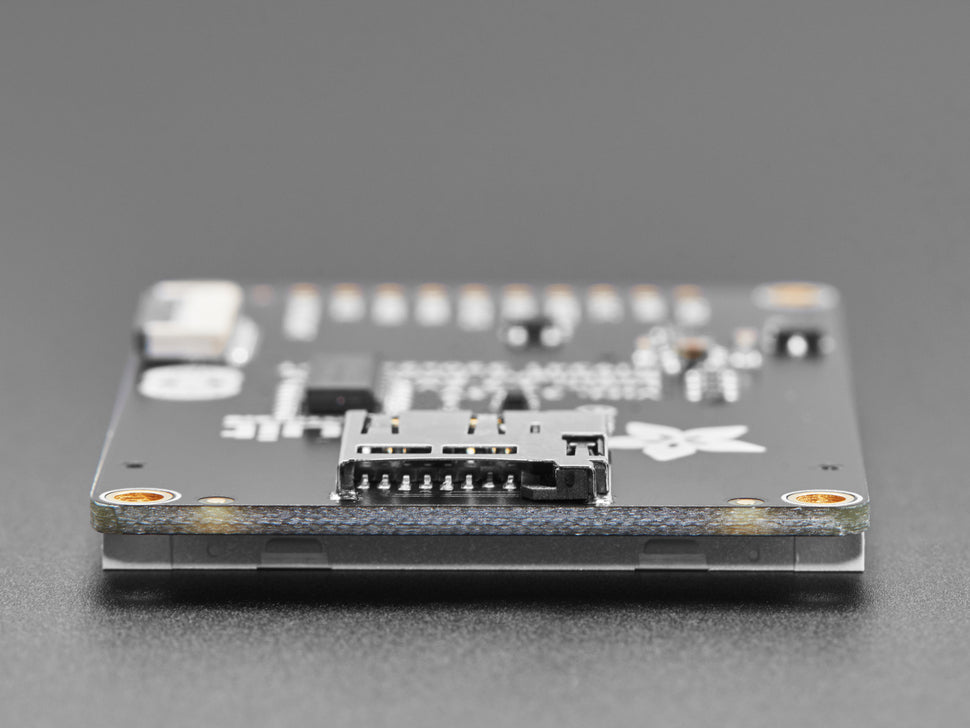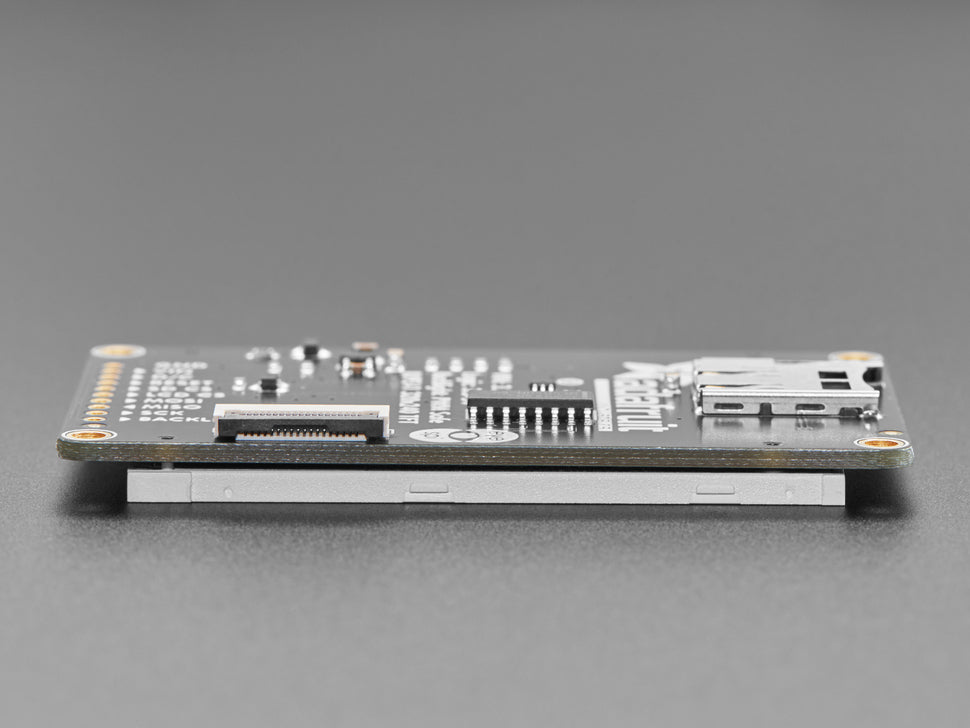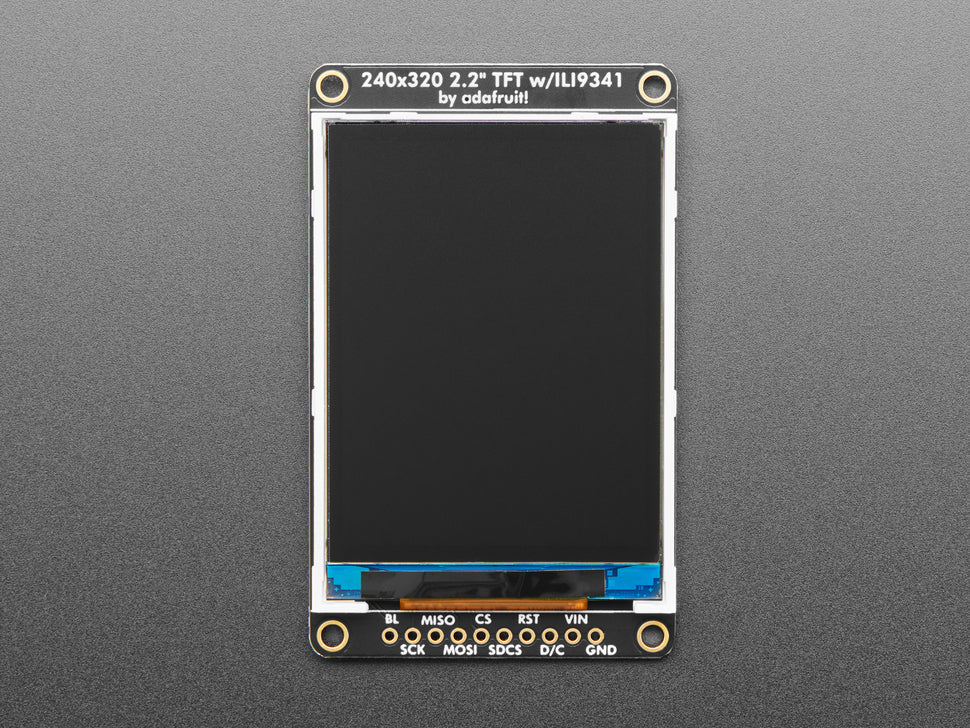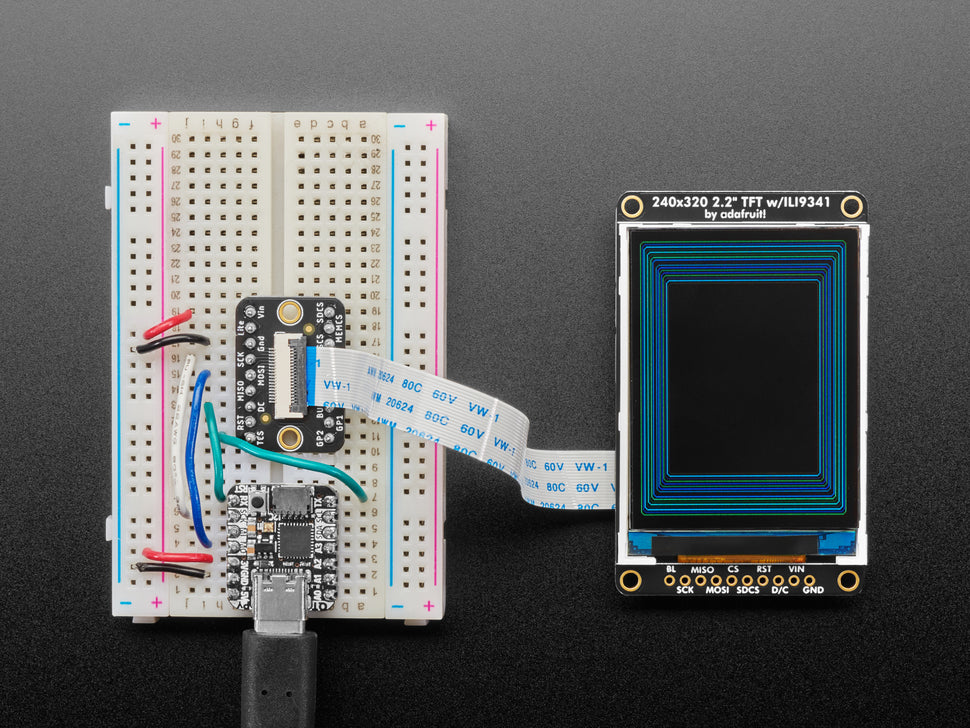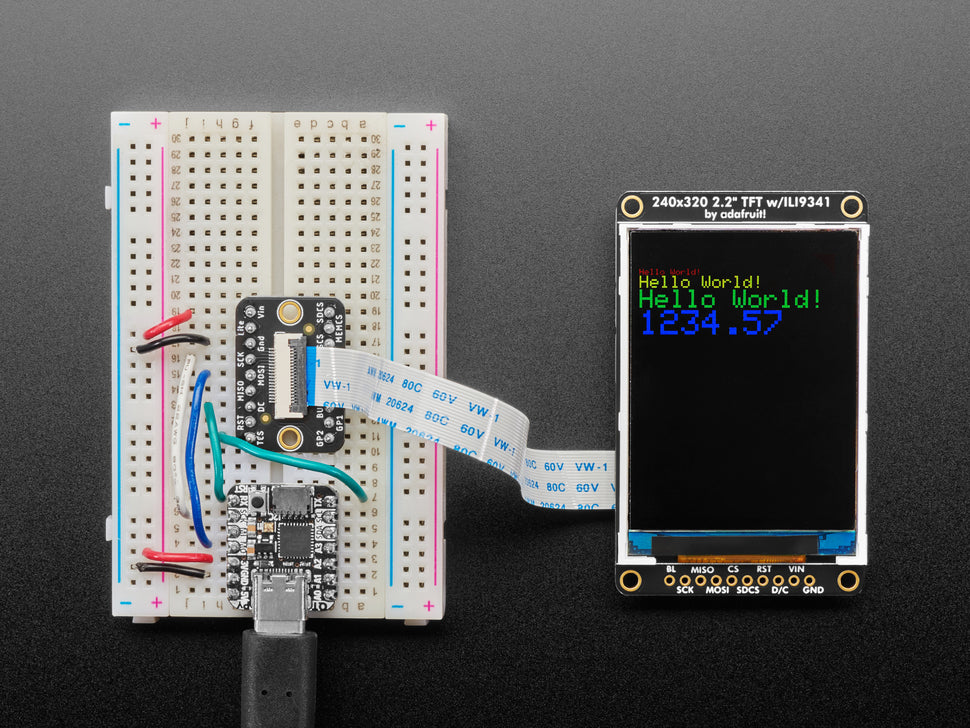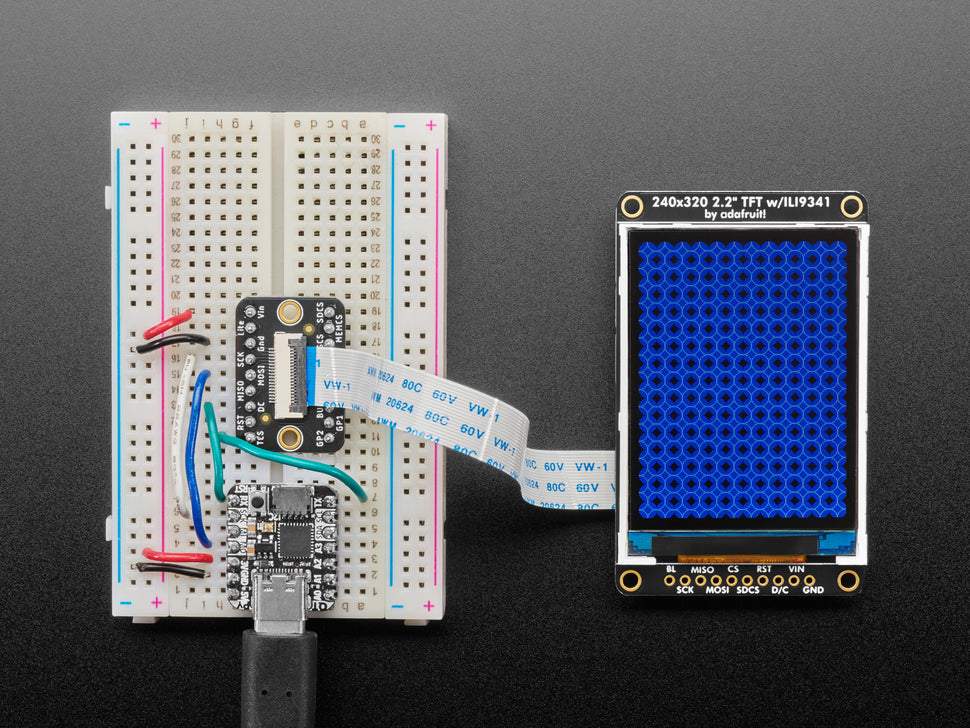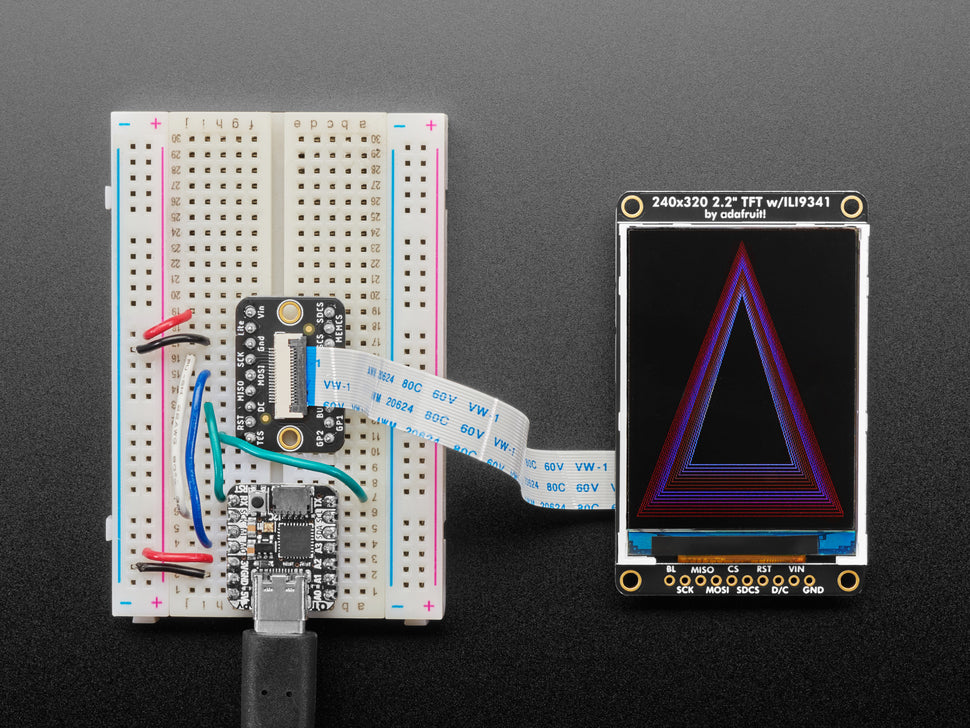Dieses hübsche kleine Display-Breakout ist der beste Weg, um ein kleines, farbenfrohes und helles Display zu jedem Projekt hinzuzufügen. Da das Display über 4-wire SPI kommuniziert und einen eigenen pixeladressierbaren Framebuffer hat, kann es mit jeder Art von Mikrocontroller verwendet werden. Sogar mit einem sehr kleinen Mikrocontroller mit wenig Speicher und wenigen verfügbaren Pins!
Das 2,2"-Display hat 320x240 Farbpixel. Im Gegensatz zu den billigen "Nokia 6110" und ähnlichen LCD-Displays, die vom CSTN-Typ sind und daher schlechte Farben und eine langsame Aktualisierung haben, ist dieses Display ein echtes TFT! Der TFT-Treiber (ILI9341 oder kompatibel) kann volle 18-Bit-Farben darstellen (262.144 Farbtöne!). Und das LCD wird immer mit demselben Treiberchip geliefert, so dass Sie sich keine Sorgen machen müssen, dass Ihr Code nicht von einem zum anderen funktioniert.
Auf dem Breakout ist das TFT-Display aufgelötet (es verwendet einen empfindlichen Flex-Circuit-Anschluss) sowie ein 3,3-V-Regler mit extrem niedrigem Dropout und ein 3/5-V-Level-Shifter, so dass Sie es mit 3,3-V- oder 5-V-Strom und Logik verwenden können. Adafruit hatte auch ein wenig Platz, so dass sie einen microSD-Kartenhalter platziert haben, so dass Sie leicht vollfarbige Bitmaps von einer FAT16/FAT32-formatierten microSD-Karte laden können. Die microSD-Karte ist nicht im Lieferumfang enthalten, aber Sie können sie hier erwerben.
Natürlich würde Adafruit Sie nicht einfach mit einem Datenblatt und einem "Viel Glück!" zurücklassen. - sie haben eine vollständige Open-Source-Grafikbibliothek geschrieben, die Pixel, Linien, Rechtecke, Kreise, Text und Bitmaps zeichnen kann, sowie Beispielcode. Der Code ist für Arduino geschrieben, kann aber leicht auf Ihren bevorzugten Mikrocontroller portiert werden! Die Verdrahtung ist einfach, wir empfehlen dringend, die Hardware-SPI-Pins Ihres Arduino zu verwenden, da Software-SPI bei dieser Displaygröße deutlich langsamer ist. Schauen Sie sich die Beispiel-Skizzen für die Verdrahtung Hilfe, bis wir eine detaillierte Verdrahtung Tutorial geschrieben!
Dieses Display-Breakout verfügt auch über einen 18-poligen "EYESPI"-Standard-FPC-Anschluss mit Flip-Top-Anschluss. Sie können ein 18-poliges FPC-Kabel mit 0,5 mm Abstand verwenden, um alle GPIO-Pins anzuschließen, wenn Sie sich das Löten sparen wollen.
English Description
This lovely little display breakout is the best way to add a small, colorful, and bright display to any project. Since the display uses 4-wire SPI to communicate and has its own pixel-addressable frame buffer, it can be used with every kind of microcontroller. Even a very small one with low memory and few pins available!
The 2.2" display has 320x240 color pixels. Unlike the low-cost "Nokia 6110" and similar LCD displays, which are CSTN type and thus have poor color and slow refresh, this display is a true TFT! The TFT driver (ILI9341 or compatible) can display full 18-bit color (262,144 shades!). And the LCD will always come with the same driver chip so there are no worries that your code will not work from one to the other.
The breakout has the TFT display soldered on (it uses a delicate flex-circuit connector) as well as an ultra-low-dropout 3.3V regulator and a 3/5V level shifter so you can use it with 3.3V or 5V power and logic. Adafruit also had a little space so they placed a microSD card holder so you can easily load full-color bitmaps from a FAT16/FAT32 formatted microSD card. The microSD card is not included, but you can pick one up here.
Of course, Adafruit wouldn't just leave you with a datasheet and a "good luck!" - they've written a full open-source graphics library that can draw pixels, lines, rectangles, circles, text, and bitmaps as well as example code. The code is written for Arduino but can be easily ported to your favorite microcontroller! Wiring is easy, we strongly encourage using the hardware SPI pins of your Arduino as software SPI is noticeably slower when dealing with this size display. Check the example sketches for wiring help until we get a detailed wiring tutorial written!
This display breakout also features a 18-pin "EYESPI" standard FPC connector with flip-top connector. You can use a 18-pin 0.5mm pitch FPC cable to connect to all the GPIO pins, for when you want to skip the soldering.
Sicherheitsangaben
- Lesen Sie die Bedienungsanleitung sorgfältig durch, bevor Sie das Produkt verwenden.
- Stellen Sie sicher, dass alle Montage- und Installationsanweisungen des Herstellers sorgfältig befolgt werden.
- Verwenden Sie das Produkt nur für den vorgesehenen Zweck.
- Die unsachgemäße Nutzung dieses Produkts kann zu schweren Verletzungen oder Sachschäden führen.
- Nicht für Kinder unter 10 Jahren geeignet.
- Bei unsachgemäßer Verwendung besteht eine Verletzungsgefahr.
- Dieses Produkt entspricht den geltenden Sicherheitsanforderungen der Europäischen Union.
- Dieses Produkt wurde gemäß der GPSR geprüft, die sicherstellt, dass alle relevanten Sicherheitsanforderungen für Konsumgüter eingehalten werden.
Nachverfolgbarkeitsinformationen
Jedes Produkt verfügt über eines oder mehrere der folgenden Merkmale:
- Ein CE-Kennzeichen, das die Einhaltung der Sicherheits-, Gesundheits- und Umweltschutzanforderungen der Europäischen Union anzeigt.
- Eine eindeutige Serien- oder Chargennummer, um die Nachverfolgbarkeit zu gewährleisten und bei Bedarf Rückrufaktionen zu unterstützen.
- Hersteller- und Importeurangaben für den Kundensupport und Sicherheitsanfragen.
Überwachung und Berichterstattung von Vorfällen
Für den unwahrscheinlichen Fall eines Produktproblems haben wir Verfahren implementiert, um:
- Kundenbeschwerden zeitnah bearbeiten.
- Schwerwiegende Vorfälle über das EU Safety Gate/RAPEX-System melden.
- Mit den Marktüberwachungsbehörden zusammenarbeiten, um die öffentliche Sicherheit zu gewährleisten.
Kontakt:
- Email: support [@] pi3g.com
- Telefon: 0341 / 392 858 40
Dieses Produkt ist vollständig mit allen geltenden EU-Vorschriften konform, um die Sicherheit unserer geschätzten Kunden zu gewährleisten.

